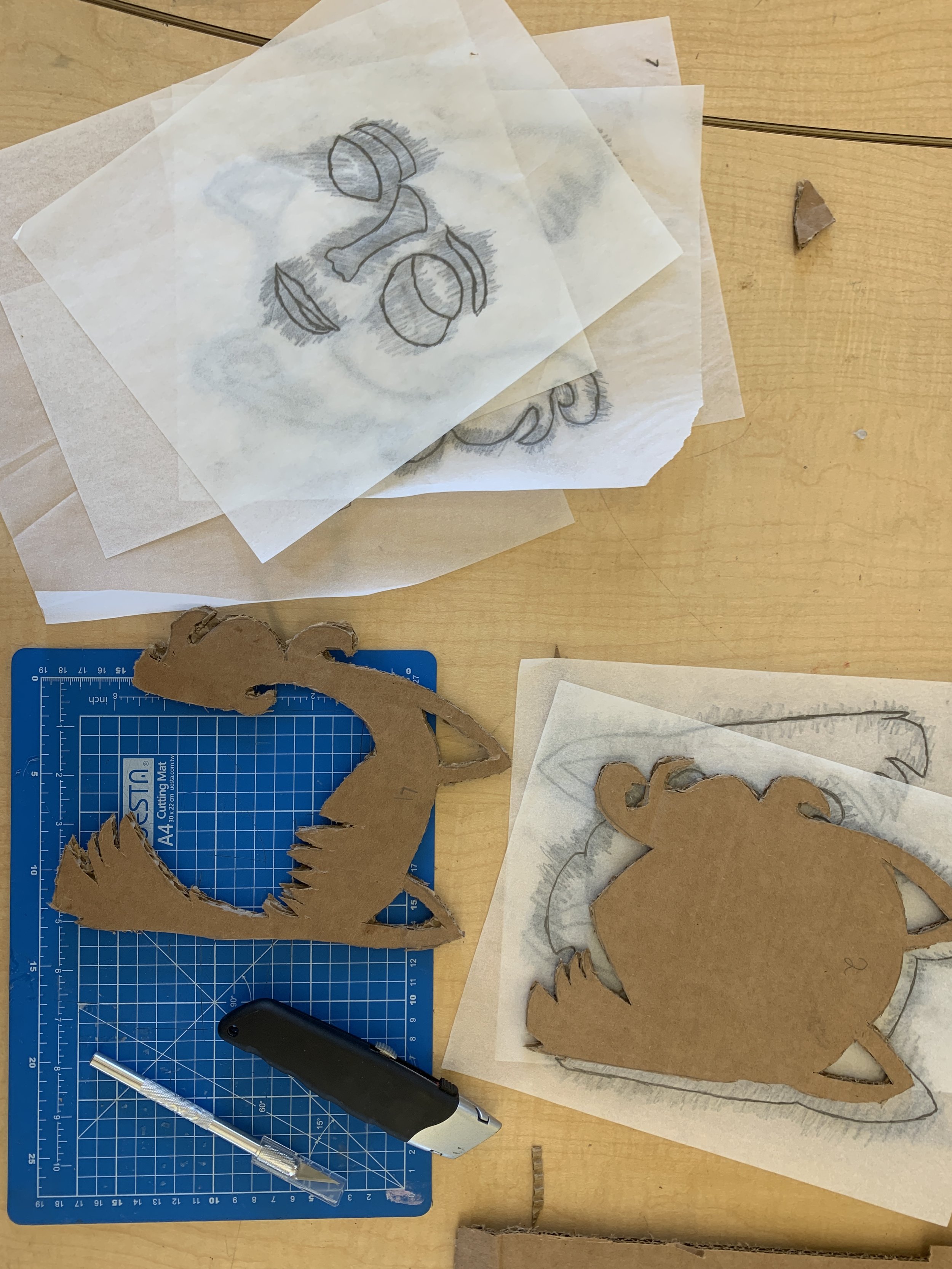Cardboard Relief Self-Portraits
To kick off Community Arc this year, Amethyst Band (10-12 year olds) have been discussing the layers of our personal identities and making "self-portraits" from many layers of cardboard. Initially, we learned about the practice of relief sculpture, the difference between low relief (bas relief) and high relief (alto-relievo), and looked at some examples of representational and abstract portraits for inspiration. Then, each Amethystian sketched a 2D design to represent themselves. Much to my surprise, very few took a literal approach to the prompt and instead sketched original characters, logotypes, and pet portraits.
In the age of the online avatar, "self-portraiture" truly knows no bounds. After we finished our preliminary sketches, each person designed their own system for mapping the distinct layers of their final sculptures. Some used color codes, while others used numbered annotations. Then, we traced each layer on separate pieces of tracing paper and used the graphite transfer technique to copy our patterns to cardboard.
Finally, we used a whole suite of cardboard tools, like boxcutters, Canary cardboard saws, and X-acto knives, to cut our pieces. And at last we assembled them together with hot glue.
Cardboard is a magical medium with so many fun structural and aesthetic properties.
Starsky exposed his cardboard's corrugation to create fur patterns for his cat.
Bennett pushed his layers to the max to create a real sense of depth.
Truman used the laser cutter to engrave Elvish runes on his design.
And many people used Posca paint markers to add details, visual rhythm, color, and style to their sculptures.


